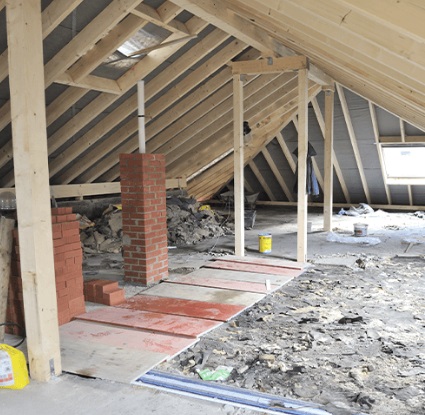The Ultimate Guide to Choosing Marine Plywood for Your Next Project

Marine plywood is the go-to material for projects that need durability and water resistance. Whether you’re building a boat, designing outdoor furniture, or working on a home renovation, marine plywood offers a range of benefits that other materials can’t match. In this guide, we’ll dive deep into the characteristics, uses, and benefits of marine plywood, along with some key factors to consider when purchasing it for your project.
What is Marine Plywood?
Marine plywood is a high-quality, moisture-resistant plywood designed to stand up to humid and wet environments. It’s made with premium hardwood veneers and waterproof adhesive, giving it the ability to resist moisture far better than traditional plywood. Due to its strength and durability, it’s frequently used in projects that require long-term exposure to water or humid conditions.
Key Characteristics of Marine Plywood:
- Waterproof adhesive: Bonded with phenolic resins to prevent water absorption.
- Durable construction: Made from high-grade veneers that resist warping and delamination.
- Void-free core: Ensures structural strength and reliability, even in tough conditions.
Benefits of Marine Plywood
Using marine plywood has several benefits, particularly when the material is exposed to moisture or harsh environmental conditions. Here are the top reasons to choose marine plywood for your project:
1. Water Resistance
Marine plywood is designed to withstand constant exposure to water, making it perfect for projects in high-moisture areas. The waterproof adhesive used ensures that the layers don’t separate, even in wet environments.
2. Strength and Durability
Because marine plywood is made from high-quality hardwoods, it offers excellent strength and structural integrity. It’s a durable material that holds up well over time, even in harsh environments, which means fewer repairs and replacements.
3. Versatility
Marine plywood is incredibly versatile and can be used in various applications, from boat building to home renovations. Its ability to be shaped, cut, and finished makes it ideal for detailed and precise work.
4. Longevity
Due to its premium construction, marine plywood tends to last longer than traditional plywood, especially in conditions where moisture is a concern. This makes it a cost-effective option over the long term.
Common Uses of Marine Plywood
Marine plywood has a wide range of uses, thanks to its durability and resistance to moisture. Here are some of the most common applications:
1. Boat Building
As the name suggests, marine plywood is frequently used in boat building. Its water-resistant properties make it the top choice for constructing boat hulls, decks, and other watercraft parts.
2. Outdoor Furniture
Because it can withstand exposure to the elements, marine plywood is an excellent option for outdoor furniture. Benches, tables, and chairs made from marine plywood last longer than those made from traditional wood.
3. Kitchen and Bathroom Cabinetry
In high-moisture areas like kitchens and bathrooms, marine plywood is often used to prevent warping and swelling that might occur with regular plywood.
4. Exterior Siding and Roofing
Marine plywood is a strong option for exterior siding and roof decking, providing moisture protection for homes and commercial buildings.
5. Docks and Piers
Marine plywood’s resistance to water makes it a reliable choice for building docks, piers, and other structures near or on the water.
Choosing the Best Marine Plywood for Your Project
Selecting the right marine plywood is crucial to ensuring the success and longevity of your project. Here are some factors to consider when purchasing marine plywood:
1. Plywood Grade
Marine plywood comes in different grades, with the highest grades (A-A or A-B) being the most durable and free of defects. Choose a grade that matches your project needs, especially for visible finishes.
2. Thickness
Marine plywood is available in various thicknesses, usually ranging from 6mm to 25mm. Thicker plywood is better suited for structural projects, while thinner sheets work well for cabinetry and non-load-bearing projects.
3. Core Material
The core of marine plywood can be made from hardwood or softwood. Opt for hardwood cores when you need the highest durability, but for less demanding projects, softwood cores might be sufficient.
4. Certification
Ensure the plywood is certified by a recognized body, such as the American Plywood Association (APA). Certification guarantees that the material meets specific water-resistant standards.
Maintenance Tips for Marine Plywood
While marine plywood is extremely durable, proper care will help it last even longer. Here are some essential maintenance tips:
1. Sealing the Edges
Even though marine plywood is resistant to water, sealing the edges with epoxy or waterproofing agent can provide extra protection, particularly for projects involving direct water contact.
2. Applying Protective Coatings
Consider applying a varnish, paint, or polyurethane finish to marine plywood. This adds an extra layer of protection against moisture and helps to preserve the wood’s appearance.
3. Regular Inspections
Inspect marine plywood structures regularly, especially if they’re exposed to water or the elements. Early detection of damage, such as cracks or chips, can prevent more extensive repairs later on.
External Links for More Information
For further reading on marine plywood standards and types, visit these resources:
- APA – The Engineered Wood Association: Provides detailed information on plywood standards and certifications.
- Marine Plywood Buying Guide: A helpful guide to purchasing plywood for various applications.
Conclusion
Marine plywood is the ideal material for projects that require strength, durability, and resistance to moisture. Whether you’re working on a boat, outdoor furniture, or a kitchen renovation, marine plywood can provide the long-lasting performance you need. By choosing the right grade, thickness, and core type, you’ll ensure your project stands the test of time.











